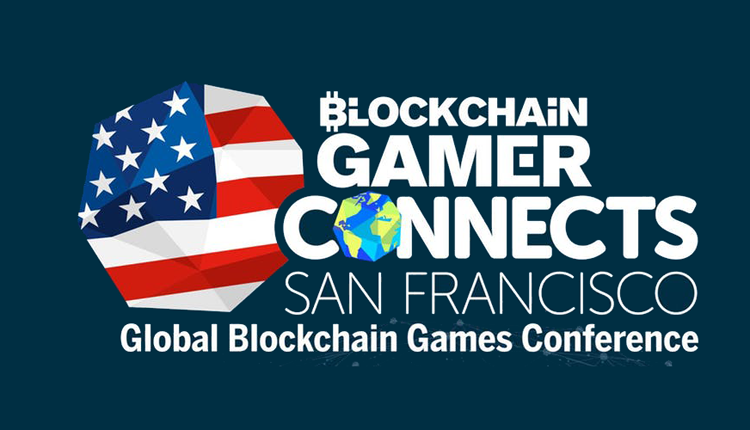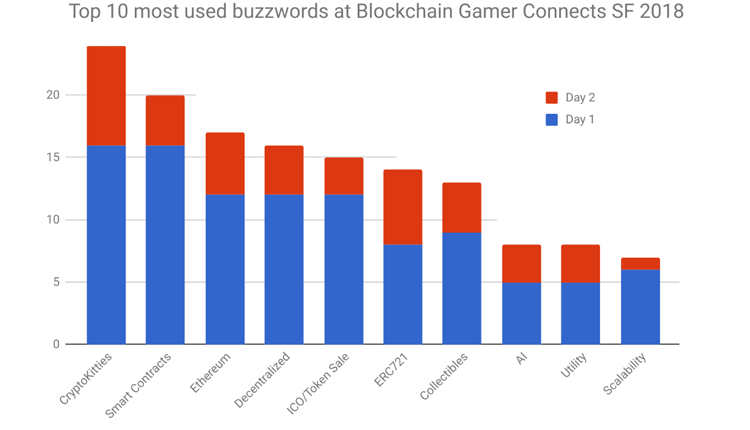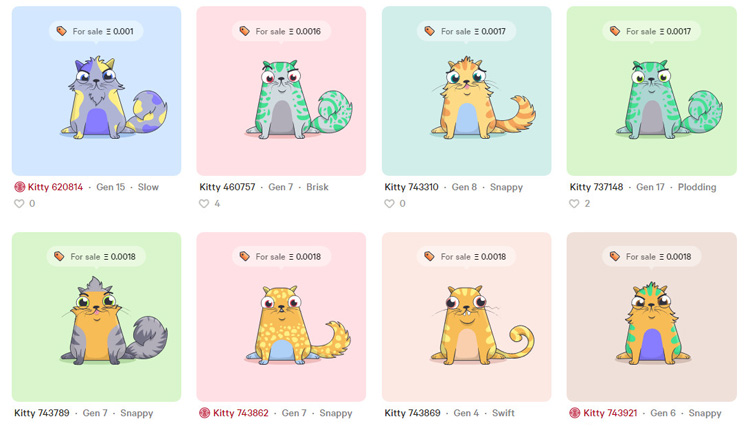10 key trends in blockchain gaming
Things we learned from Blockchain Gamer Connects San Francisco 2018

Things we learned from Blockchain Gamer Connects San Francisco 2018
The blockchain gaming industry is moving fast, lightening fast.
That’s why conferences such as Blockchain Gamer Connects, which just completed its first two-day event in San Francisco, are so important.
50 speakers ripping through their allocated 20 minutes to talk about their approach to the sector, plenty of interaction through questions and panel talks, not to forget the excellent networking opportunities, and the result is a brain full of new facts, trends and thoughts about the future.
Which brings us to our roundup of the event.
It’s not arranged on a per-session format. That will come as all the sessions videos are made available on our YouTube site. (Subscribe now!).
Instead, we’ve taken a more holistic approach and attempted to pick out the key trends that will be shaping the industry until we meet again in Helsinki, Finland in 11-12 September.
More details about the Helsinki blockchain gaming track will be released soon, but in the meantime, dive into our 10 top learnings from Blockchain Gamer Connects San Francisco 2018
-
1. It’s early, perhaps too early
Blockchain gaming can be considered equivalent to mobile gaming pre-App Store. There are a lot of interesting ideas but given the barriers to entry, the addressable market is tiny and highly skewed.
When will my mom be able to play a blockchain game?
“We’re the internet at its AOL stage,” commented CryptoKitties’ Benny Giang.
-
2. Are they games?
Following on from this, too many blockchain games are currently too ‘blockchain’ and not enough ‘game’. This divide is also seen in the popularity of the term ‘crypto’ when applied to such games. Perhaps more of a personal opinion that a conference conclusion, but the quicker this sector burns the term ‘crypto’ in relation to games, the better. This is about the games not currencies.
-
3. When can momma play?
The biggest single issue with blockchain games currently is user experience in terms of the difficulty of buying the cryptocurrency required to play. Even in the case of fairly streamlined UX such as Metamask, the vast majority of users progressing from a blockchain game’s landing page to a Metamask registration page are dropping out.
“When will my mom be able to play a blockchain game?” was the question posed by more than one speaker. This is important given the historic importance of mom-friendly games. FarmVille was the game that kickstarted Facebook gaming with Candy Crush Saga taking a similar role for mobile F2P gaming.
-
4. Making ownership matter
Maybe such issues mean the first really big blockchain games will be less about gaming on the blockchain and more about game item ownership on the blockchain c.f. the kitties underpinning CryptoKitties.
We already see the popularity of such activity in the estimated $50 billion of annual transactions spent on game items such as Counter-Strike: Global Offensive gun skins.

Certainly, William Quigley of WAX and OPSkins is of the opinion blockchain games need to actively support third party marketplaces to drive market liquidity. However, he warns adopting standards such as ERC721 are required but not sufficient to enable such trading to blossom. Similarly, item scarcity is a valuable lever but only if players actually care about the item.
-
5. Show me the game
Such thinking is condensed into a very simple conclusion: in order to be successful, blockchain games will need to be enjoyable games. “It has to be a good game first,” says Lucid Sight CEO Randy Saaf. “It’s got to be fun,” echoes B2Expand’s Skyler Goldstein.
-
6. Technology wars
But perhaps we are failing to properly understand just how nascent blockchain gaming is for anything other than CryptoKitties-style item collection. Certainly Refereum investor Kim Koh remains skeptical about the point of blockchain gaming. Others are more positive, but there was much talk about which future blockchain technology would win out. Ethereum fans mentioned the impact of advances such as Plasma, Christian Hasker spoke about the Hedera Hashgraph, while other projects are using the likes of NEO (Parsec Frontiers) and EOS (WAX).
As for the most popular blockchain game, CryptoKitties’ Benny Giang said, no matter what happens in future, CryptoKitties will always be an Ethereum game, although the company’s future games were likely to use other blockchains.
“Don’t worry too much about scalability or speed. They are less important than futureproofing your projects for sustained success,” he said.
-
7. Piggy-backing CryptoKitties’ success
Indeed, the role of CryptoKitties as the #1 blockchain game is certainly demonstrated the power of blockchain games to become de facto platforms whether their developers embrace this or not. Projects ranging from KittyHats to Crypto Cuddles and HyperDragons are using the game, adding secondary gameplay on top. This is something Benny Giang calls “the Kittyverse”.

Other developers are looking actively build such communities too, with the likes of Experiemental, Reality Gaming and Alto all proposing projects to optimize the interoperability of non-fungible tokens across games.
-
8. It’s not about the money
But perhaps by focusing too much on tokens the industry’s missing out on other important aspects of blockchain for gaming. Certainly as a publicly listed company Ubisoft is being very careful about what it says about blockchain, but of all the big traditional gaming companies, it’s been the most active investigating blockchain through its Strategy Innovation Lab. One blockchain game it’s prototyped internally is Hashcraft, a 3D island action/challenge game.
How can blockchain improve the player experience and help community building?
“The question we asked was ‘How can blockchain improve the player experience and help community building’?” explained Ubisoft’s blockchain initiative manager Nicolas Pouard.
- 9. Banhammer inbound?
Not specifically related to blockchain games, but everyone in the industry is well aware of how governmental regulation is tightening. That was something ex-SEC lawyer Alexandra Damsker brought into hard focus in terms of the US landscape on ICOs. “Right now, the system makes no sense,” she said, although that doesn’t mean ICOs can’t happen in the US. Companies just need to be very careful and disciplined.
And there remain plenty of concern about aspects of blockchain gaming beyond ICOs, most notably the status of virtual items, which up to this point have been viewed as valueless.
“I think it’s unlikely, but Congress does has the power to ban crypto in the US if the industry doesn’t improve its behavior,” Damsker pointed out.
- 10. Let your light shine
And an industry, which is shaking up so many aspects of technology, ownership and financial value, it’s as well to remain as cautious of the potential challenges as enthused about the potential opportunities, especially given the challenges are now and the opportunities remain in the future.
So how to act? Let’s leave the last word to Refereum’s Dylan Jones who warned the audience that once he’d paid all his lawyer fees, he had $31 left in his account. Indeed, it’s now reckoned it costs at least $1.5 million to run an ICO and get your token listed on a major exchange.
“There are a lot of speculators and not a lot of builders at the moment,” Jones said. “It’s hard work, it’s a journey, and integrity shines brighter. Being fair and transparent will win out in the end.”
Don’t forget to follow BlockchainGamer.biz on Twitter and Facebook. And search for us on Telegram.

